This checklist outlines the core duties and behavioral standards for event hostesses across pre-event, on-site, and post-event phases. It applies to diverse scenarios such as exhibitions, product launches, and ceremonies. Staff can clarify role expectations, while organizers may use it for training and performance evaluation.
Responsibilities of Event Hostesses
1. Greeting & Reception
◆ Greet guests at the event entrance with a smile, guide them to sign in politely.
◆ Verify invitations or e-tickets, assist in distributing event materials or souvenirs.
2. Direction Guidance
◆ Familiarize with venue layout, guide guests to designated areas (e.g., main hall,
exhibition booths, lounge).
◆ Provide priority assistance to guests with special needs (e.g., VIPs, disabled
individuals).
3. On-site Support
◆ Assist organizers in facilitating event procedures (e.g., award ceremonies,
ribbon-cutting, opening ceremonies).
◆ Manage queue order and answer basic inquiries (e.g., restroom locations,
catering areas).
4. Image Presentation
◆ Maintain professional demeanor (posture, gestures, expressions) to reflect the
event’s brand image.
◆ Wear designated uniforms neatly and display event badges as required.
5. Protocol Services
◆ Assist VIPs with boutonnieres, hand over microphones/gifts, and provide tray
services with grace.
◆ Coordinate with media for photo sessions, arrange guest positioning and
interactions.
6. Emergency Handling
◆ Promptly identify and report emergencies (e.g., equipment failure, guest
conflicts).
◆ Possess basic first aid and evacuation knowledge, collaborate with security for
safety control.
7. Post-event Duties
◆ Assist in collecting materials, tidying up registration areas, and returning
equipment.
◆ Provide feedback on issues and improvement suggestions, complete other
tasks assigned by organizers.
Core Competencies
◆ Bilingual communication skills (Chinese & English)
◆ Adaptability and stress management
◆ Basic knowledge of business etiquette
◆ Teamwork awareness
This checklist can be tailored to specific event types. Pre-event rehearsals and protocol training are recommended.
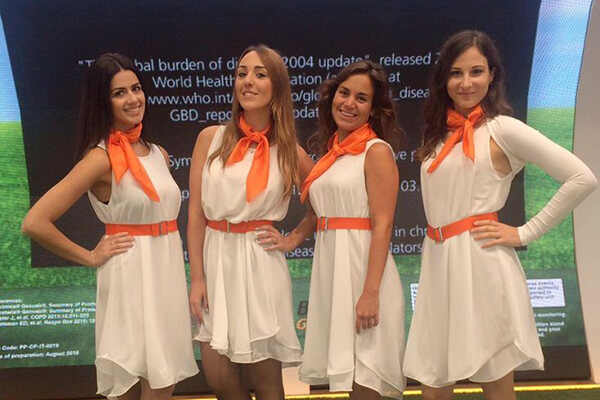



This checklist outlines the core responsibilities and behavioral standards for models across pre-event, on-site, and post-event phases. It applies to scenarios such as fashion shows, product launches, and exhibition displays, supporting brands in achieving impactful visual marketing.
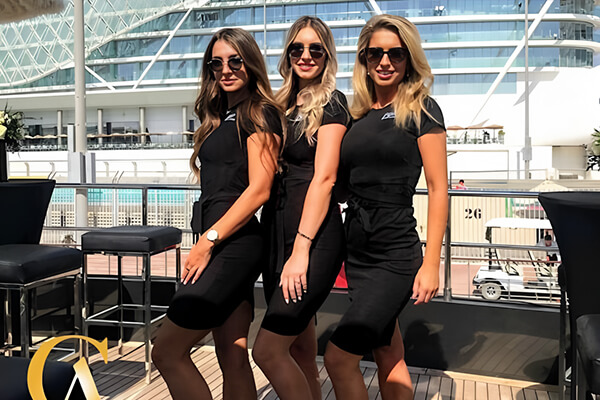
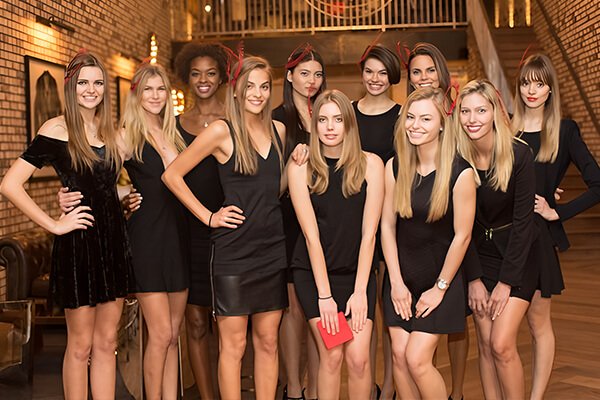


Responsibilities of Event & Exhibition Models
1. Product Demonstration & Storytelling
◆ Demonstrate product key features (e.g., apparel, jewelry, tech devices)
through professional poses, expressions, and movements.
◆ Perform contextualized storytelling aligned with brand themes (e.g., runway
walks, static posing, scenario-based interactions).
2. Runway & Stage Performance
◆ Execute runway walks according to scripts, ensuring synchronization with
music, lighting, and formation.
◆ Engage in stage performances during launches or ceremonies to convey
brand creative concepts.
3. Media & Photography Collaboration
◆ Proactively adjust poses and angles for photographers/videographers to
ensure high-quality visual content.
◆ Communicate product details and brand key messages clearly during media
interviews or live streams.
4. Image Management
◆ Adhere strictly to brand guidelines for makeup, hairstyle, and attire before
events.
◆ Maintain professional appearance during exhibitions, avoiding inappropriate
behavior that may harm brand reputation.
5. Audience Engagement
◆ Proactively invite visitors to experience products at booths, boosting
engagement through friendly interactions.
◆ Answer basic visitor inquiries (e.g., product materials, functions) and redirect
complex questions to specialists.
6. Adaptability & Teamwork
◆ Adapt flexibly to changes (e.g., schedule shifts, route adjustments) and follow
on-site instructions.
◆ Collaborate effectively with makeup artists, fellow models, and event staff.
7. Backstage Preparation & Safety Compliance
◆ Inspect costumes and props in advance, report damages or shortages
promptly.
◆ Follow backstage safety protocols (e.g., fire prevention rules, equipment
guidelines).
Key Competencies
◆ Body expressiveness and camera awareness
◆ Ability to memorize product details quickly
◆ Cross-cultural sensitivity (for international events)
◆ Physical stamina for prolonged standing/walking
Note: Responsibilities may vary by event type (e.g., luxury fashion shows, auto shows, tech expos). Pre-event rehearsals and brand training are recommended.
This checklist applies to part-time roles (e.g., receptionists, guides, logistics assistants) in exhibitions, product launches, markets, etc. It outlines core tasks and behavioral standards to help part-time staff integrate quickly and deliver results effectively.
Responsibilities of Part-time Staff
1. Greeting & Check-in Support
◆ Greet attendees at entrances or registration desks with a smile, assist in
verifying tickets/e-passes.
◆ Distribute event materials, maps, or souvenirs, answer basic inquiries (e.g.,
schedule, restroom locations).
2. Direction Guidance & Crowd Control
◆ Learn venue layout, guide attendees to designated areas (e.g., booths, stages,
catering zones).
◆ Manage queues to prevent overcrowding, report overcrowding or safety risks
promptly.
3. Material Handling & Booth Assistance
◆ Help transport and organize materials (e.g., brochures, gifts, furniture), keep
booths tidy.
◆ Support full-time staff in basic product demos or experience guidance (after
training).
4. Photography & Livestream Support
◆ Assist photographers with equipment or props, encourage attendees to
engage in photo sessions.
◆ Manage basic equipment (e.g., microphones, cue cards) during livestreams.
5. Audience Engagement & Feedback
◆ Invite attendees to participate in surveys, polls, or games to boost
engagement.
◆ Document attendee feedback or complaints and submit summaries to
supervisors.
6. Logistics & Cleanliness
◆ Regularly clean trash, restock supplies (e.g., tissues, water), maintain public
area hygiene.
◆ Assist in post-event material collection, inventory checks,
and equipment returns.
7. Emergency Response
◆ Know locations of emergency exits and medical stations, assist in evacuation
or guiding injured attendees.
◆ Report equipment failures, conflicts,
or emergencies to supervisors immediately.
8. Feedback & Reporting
◆ Submit brief daily reports post-event (e.g., attendance data, issue summaries).
◆ Provide suggestions for process improvements (e.g., check-in efficiency,
layout design).
Core Competencies
◆ Basic communication and service-oriented mindset
◆ Basic English skills (for international events)
◆ Adaptability to fast-paced environments
◆ Team collaboration and task execution
Notes
◆ Part-time staff must attend 1-2 hours of pre-event training to learn procedures
and safety rules.
◆ Confidentiality agreements apply (e.g., unreleased product details,
guest privacy).
◆ Schedules and hours may vary based on event needs; suitable for students or
flexible workers.
Checklist details can be tailored to event types (e.g., large expos, small markets). Organizers should clarify task priorities in advance.

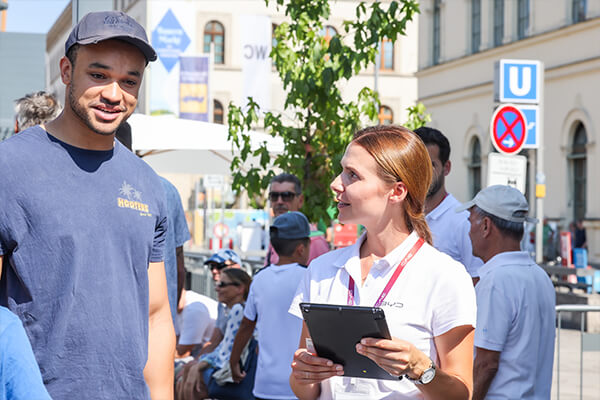


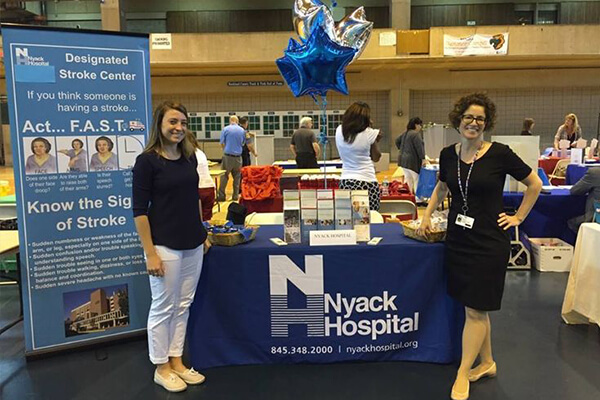
This checklist applies to large-scale exhibitions, product launches, ceremonies, and similar events. It defines the core responsibilities and decision-making authority of flow directors across pre-event, on-site, and post-event phases, serving as a standardized reference for efficient event execution.



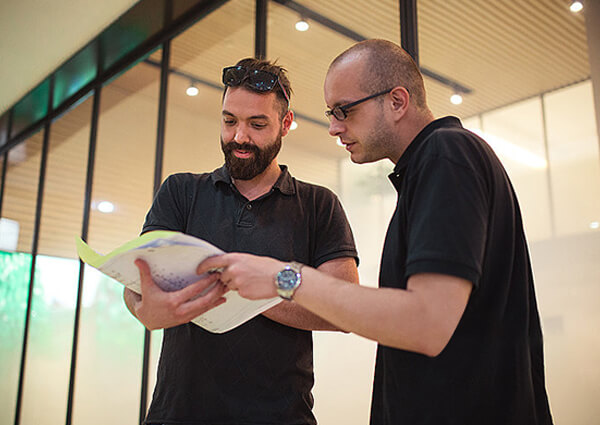
Responsibilities of Event Flow Director
1. Full Process Planning & Rehearsals
◆ Finalize the event master plan (timeline, transition points, contingency plans)
with the planning team, and deliver an executable rundown.
◆ Lead cross-departmental rehearsals (e.g., tech, performers, hosts) to refine
process details.
2. On-site Timing & Pacing
◆ Monitor real-time progress, adjust pacing via headset/walkie-talkie
(e.g., extend interactions, shorten speeches).
◆ Provide countdown prompts to hosts and speakers, ensuring precision in
critical moments (e.g., opening ceremonies, live broadcasts).
3. Cross-Team Coordination
◆ Coordinate handovers between technical teams (lighting, audio, screens),
performers, and logistics to resolve resource conflicts.
◆ Act as the liaison between organizers and external teams (e.g., media,
sponsors) to communicate and implement special requests.
4. Technical Flow Oversight
◆ Verify AV equipment, video playbacks, and interactive system triggers with
backup plans.
◆ Direct technical cue points during rehearsals and live events (e.g., music
start/stop, lighting changes, screen content sync).
5. Emergency Decision-Making & QA
◆ Assess real-time risks (e.g., equipment failure, VIP absences, delays) and
activate contingency plans or adapt processes.
◆ Audit execution quality (e.g., stage props placement, signage visibility) to
eliminate operational blind spots.
6. Data & Feedback Integration
◆ Compile post-event reports with process optimization insights (e.g., timeline
deviation analysis, team efficiency evaluation).
◆ Report key milestone outcomes to organizers (e.g., media exposure peaks,
audience engagement metrics).
Core Competencies
◆ Mastery of end-to-end process design
◆ Rapid decision-making under pressure
◆ Experience in multitasking management
◆ Proficiency in technical terminology and tools (e.g., QLab, ProPresenter)
◆ Exceptional communication and leadership
Authority & Resources
◆ Authority to modify process sequences or remove non-critical segments
during emergencies.
◆ Access to contingency budgets (e.g., emergency equipment rentals)
with post-event reporting.
◆ Authority to recommend staffing optimizations for collaborating teams.
Note: For large-scale events, appoint an assistant director and finalize a signed process agreement pre-event to prevent disputes.
This checklist applies to cleaning roles in exhibitions, product launches, markets, etc. It outlines core tasks and operational standards to enhance collaboration and overall event quality.
Responsibilities of Cleaning Staff
1. Daily Cleaning & Maintenance
◆ Regularly clean public areas (e.g., aisles, lounges, booth peripheries) to
remove trash, spills, or debris.
◆ Wipe surfaces (e.g., booth tables, glass panels, railings) to ensure dust-free
cleanliness.
2. Waste Collection & Sorting
◆ Empty bins per sorting rules (recyclable/non-recyclable/food waste), replace
bags, and transport sealed waste to designated areas.
◆ Dispose of bulk waste (e.g., promotional materials, packaging boxes) and
coordinate with property management or recycling vendors.
3. Restroom Hygiene & Restocking
◆ Inspect restrooms every 1-2 hours; sanitize toilets, sinks, mirrors, and restock
supplies (e.g., toilet paper, soap).
◆ Address minor issues (e.g., clogs, leaks) and report equipment failures
requiring professional repair.
4. Stain Removal & Emergency Response
◆ Promptly clean accidental spills (e.g., beverages, grease) with appropriate
cleaners to avoid surface damage.
◆ Lay anti-slip mats during rain/snow, clear entrance puddles to prevent slips.
5. Disinfection & Health Safety
◆ Disinfect high-touch areas (e.g., door handles, elevator buttons) periodically as
per health guidelines.
◆ Manage dedicated disposal bins for used masks, adhering to medical waste
protocols.
6. Supply Management & Equipment Care
◆ Maintain cleaning tools (e.g., mops, buckets, vacuums); clean, dry, and store
them post-use.
◆ Monitor equipment conditions (e.g., battery levels, wear), report malfunctions
for repair/replacement.
7. Inspection & Reporting
◆ Conduct hourly area inspections, document hygiene status, and flag areas
needing recleaning or repairs.
◆ Submit post-event cleaning reports (e.g., supply consumption, incident logs).
Core Competencies
◆ Basic cleaning techniques and tool operation
◆ Physical stamina for prolonged tasks
◆ Ability to read basic bilingual signs (for international events)
◆ Environmental and safety awareness
Notes
◆ Schedule cleaning during off-peak hours (e.g., 1 hour pre-event, during
intermissions).
◆ Wear gloves/masks when handling chemicals; follow Material Safety Data
Sheets (MSDS).
◆ Report suspicious items (e.g., unattended bags) to security immediately;
do not intervene independently.
Note: For large events, assign cleaning zones and implement shift rotations for full coverage.
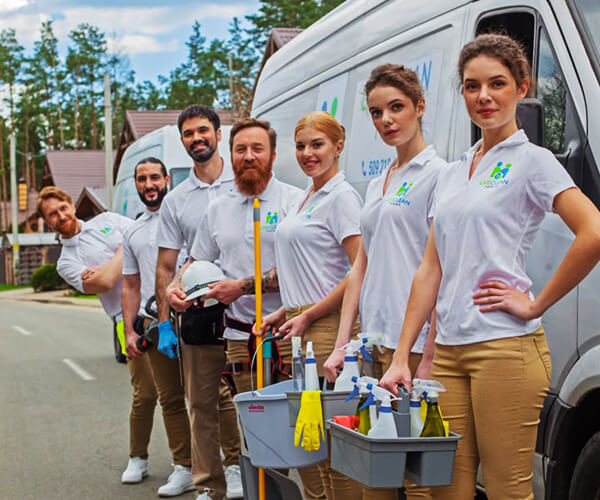
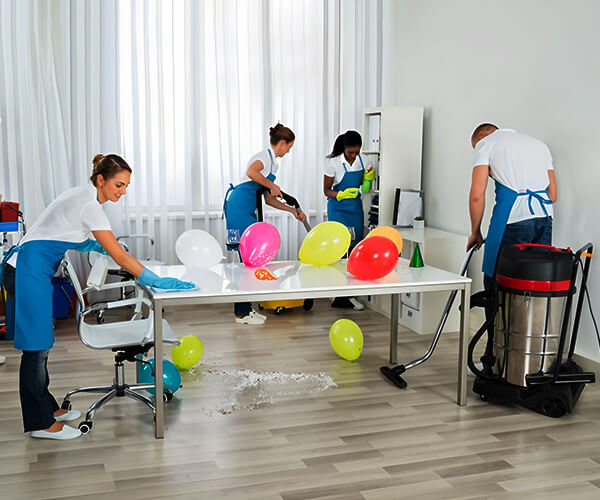
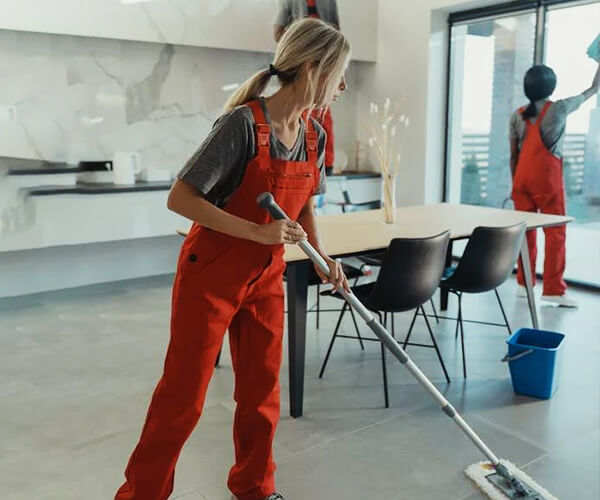
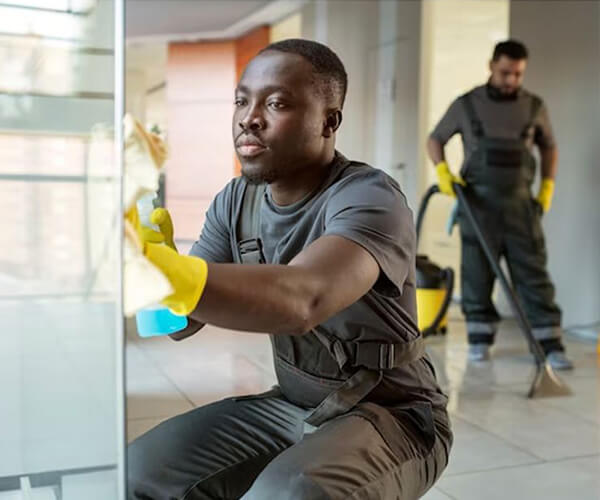
This checklist applies to cleaning roles in exhibitions, product launches, markets, etc. It outlines core tasks and operational standards to enhance collaboration and overall event quality.
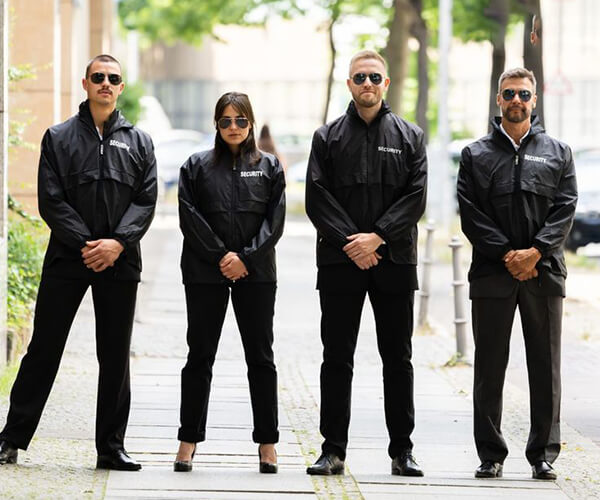
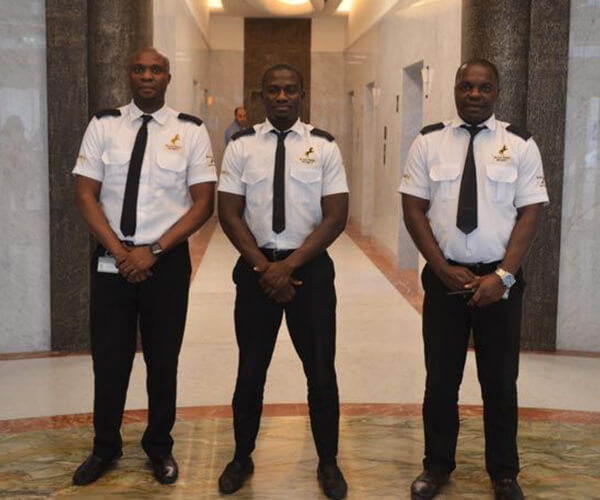
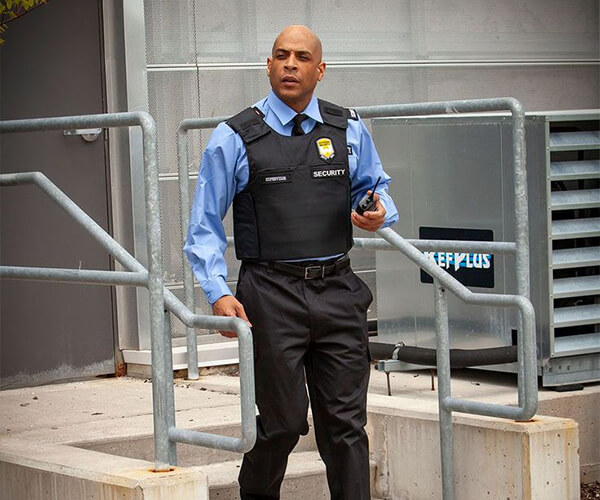
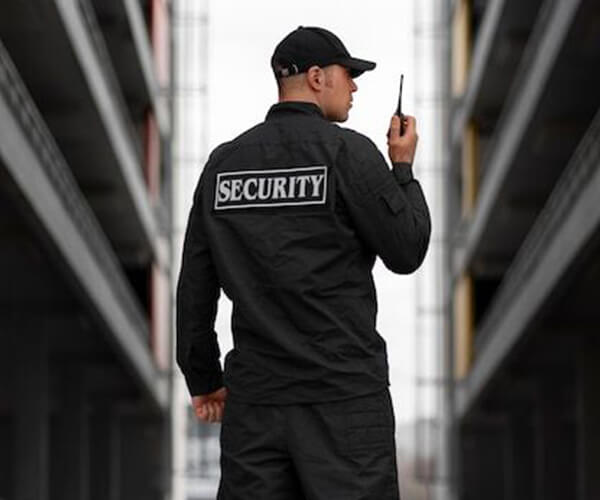
Responsibilities of Cleaning Staff
1. Daily Cleaning & Maintenance
◆ Regularly clean public areas (e.g., aisles, lounges, booth peripheries) to
remove trash, spills, or debris.
◆ Wipe surfaces (e.g., booth tables, glass panels, railings) to ensure dust-free
cleanliness.
2. Waste Collection & Sorting
◆ Empty bins per sorting rules (recyclable/non-recyclable/food waste), replace
bags, and transport sealed waste to designated areas.
◆ Dispose of bulk waste (e.g., promotional materials, packaging boxes) and
coordinate with property management or recycling vendors.
3. Restroom Hygiene & Restocking
◆ Inspect restrooms every 1-2 hours; sanitize toilets, sinks, mirrors, and restock
supplies (e.g., toilet paper, soap).
◆ Address minor issues (e.g., clogs, leaks) and report equipment failures
requiring professional repair.
4. Stain Removal & Emergency Response
◆ Promptly clean accidental spills (e.g., beverages, grease) with appropriate
cleaners to avoid surface damage.
◆ Lay anti-slip mats during rain/snow, clear entrance puddles to prevent slips.
5. Disinfection & Health Safety
◆ Disinfect high-touch areas (e.g., door handles, elevator buttons) periodically
as per health guidelines.
◆ Manage dedicated disposal bins for used masks, adhering to medical waste
protocols.
6. Supply Management & Equipment Care
◆ Maintain cleaning tools (e.g., mops, buckets, vacuums); clean, dry, and store
them post-use.
◆ Monitor equipment conditions (e.g., battery levels, wear), report malfunctions
for repair/replacement.
7. Inspection & Reporting
◆ Conduct hourly area inspections, document hygiene status, and flag areas
needing recleaning or repairs.
◆ Submit post-event cleaning reports (e.g., supply consumption, incident logs).
Core Competencies
◆ Basic cleaning techniques and tool operation
◆ Physical stamina for prolonged tasks
◆ Ability to read basic bilingual signs (for international events)
◆ Environmental and safety awareness
Notes
◆ Schedule cleaning during off-peak hours (e.g., 1 hour pre-event,
during intermissions).
◆ Wear gloves/masks when handling chemicals;
follow Material Safety Data Sheets (MSDS).
◆ Report suspicious items (e.g., unattended bags) to security immediately;
do not intervene independently.
Note: For large events, assign cleaning zones and implement shift rotations for full coverage.